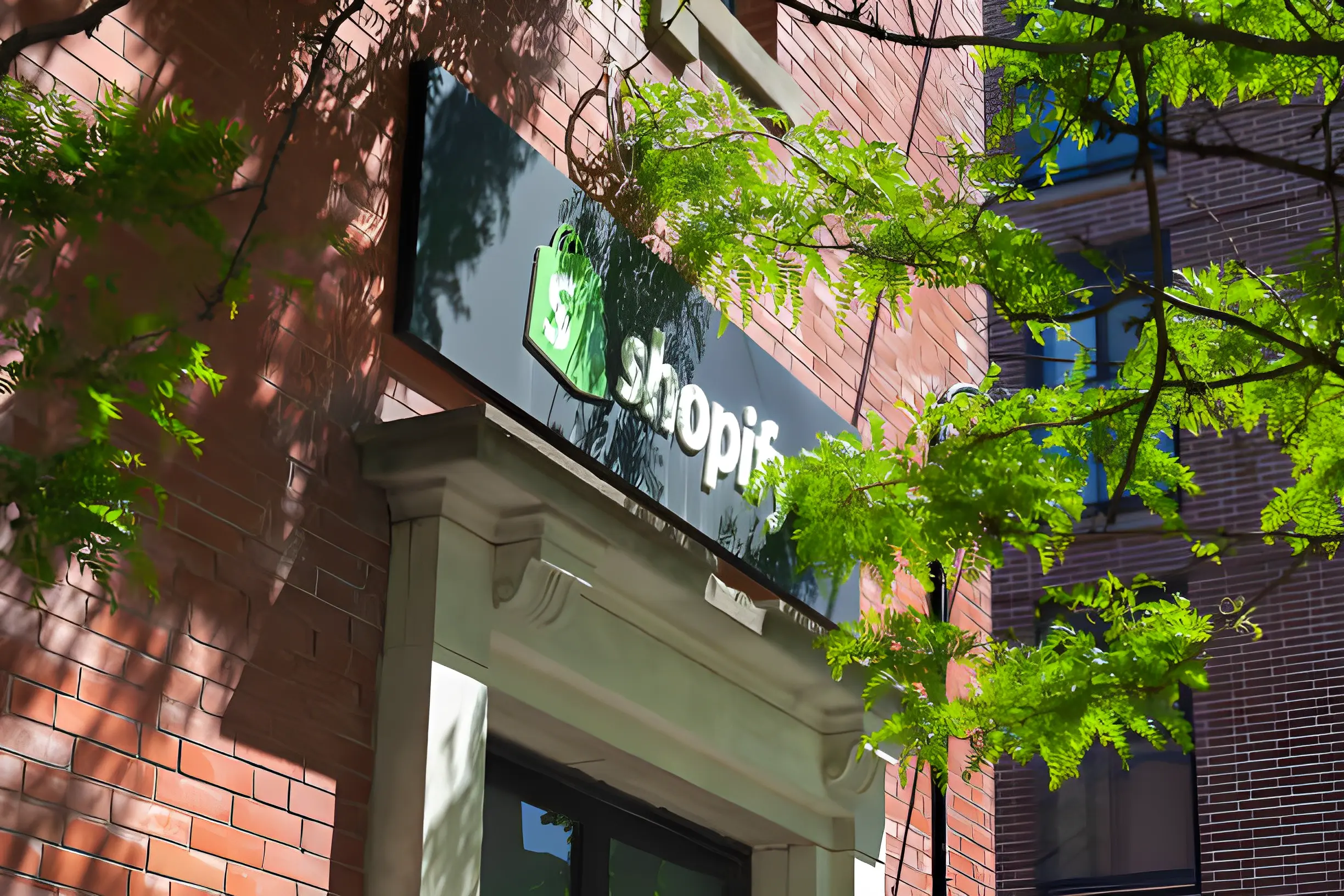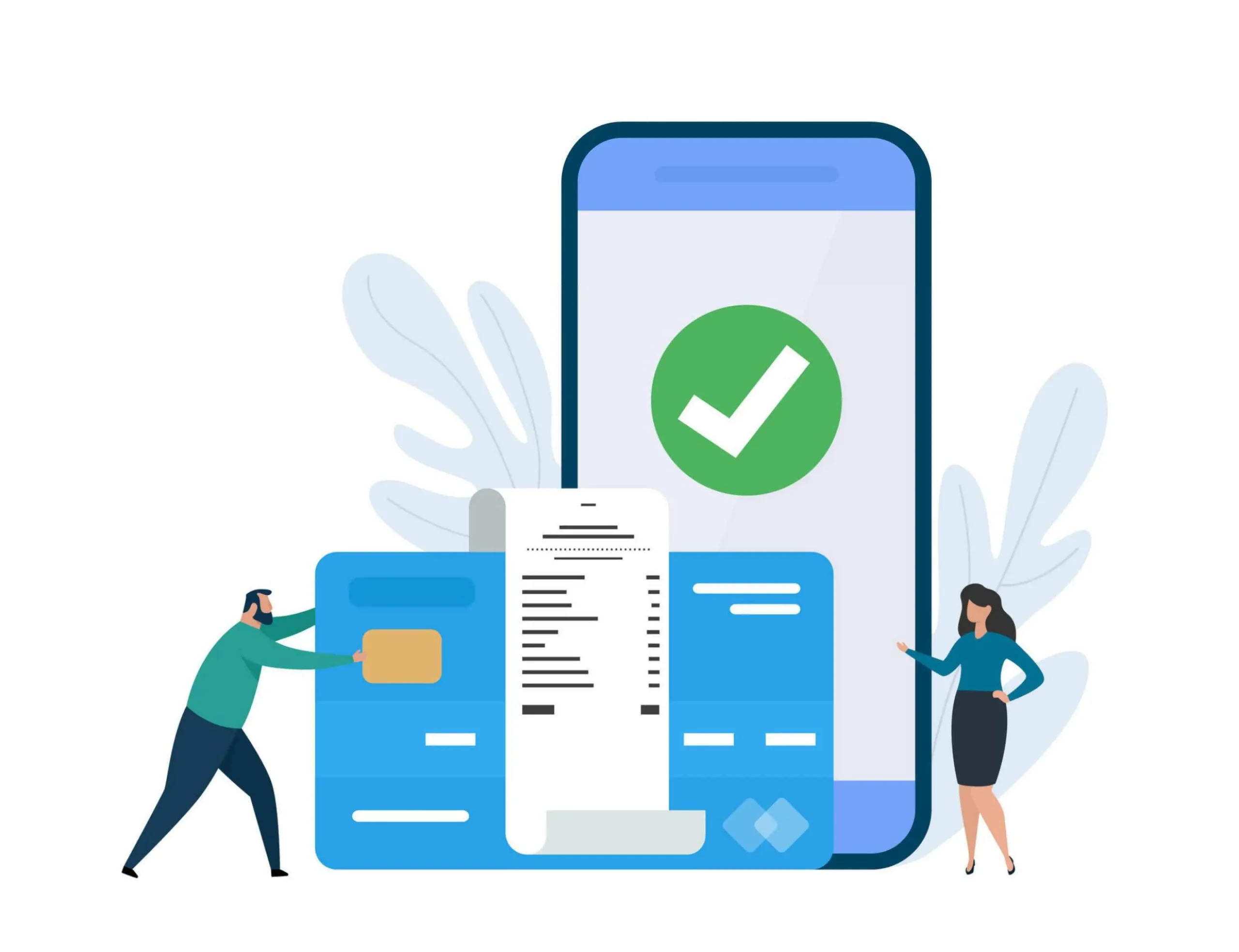
by bluedigi123 | Nov 17, 2024 | Digital Marketing |
How Much is Shopify a Month? A Detailed Look at Shopify Pricing and Fees

I have been an e-commerce consultant for some time. I have helped many online businesses set up and optimize their e-commerce stores. This guide will provide a comprehensive overview of Shopify’s pricing structure and associated fees based on my firsthand insights as I use the platform myself.
Shopify is a well-known and very popular E-commerce platform used by more than a million businesses globally. It provides various pricing options for different business sizes and requirements per the client’s needs. My attention will be to give an overview of all these mentioned plans so you can judge the software your expenses will have.
Shopify’s Main Pricing Plans
Shopify offers four main monthly tariff plans, from $29 to $299. Due to the time I spent on different projects, I can tell you all the pros and cons of each plan:
1. Basic Shopify – $29/month
This is the most suitable tariff for startup e-commerce stores and companies with a small list of products. It includes:
- Unlimited product listings
- 2.9% + 30¢ transaction fees
- Shopify POS app
- Abandoned cart recovery
- 24/7 support
In my practice, I very much appreciate the Basic plan for most startups and small companies. Nevertheless, some things could be improved, for instance, the absence of gift cards and professional reporting.
2. Shopify – $79/month
The standard Shopify plan builds on the Basic plan with additional features:
- Gift cards
- Professional reporting
- International pricing
- Advanced shipping rates
Initially, it is the most chosen variant among companies in the expansion phase. It has a comprehensive feature set at an affordable price.
3. Advanced Shopify – $299/month
The Advanced Shopify plan is designed for more established companies and offers extra tools such as
- Advanced report builder
- Advanced fulfillment
- Third-party calculated shipping rates
- Site staging
I have mostly given this recommendation to companies with big product lists, bulk editing facilities, and advanced performance reporting capabilities.
I want to specify that these cost bases will have additional charges that may be applied concerning your specific business needs and transaction volume. I always tell my clients to factor in these potential additional fees when making budgets for their Shopify stores.
In conclusion, Shopify proposes a collection of simple plans for different business needs and sizes. Over time, from what I have seen, the majority of businesses are more likely to find the most suitable plan among those with a range of prices that help them start and grow their online presence effectively.
Shopify Plus – Custom Pricing
Shopify Plus is tailored for enterprise brands with complex needs, offering:
- Customizable features
- Dedicated Merchant Success Manager
- High-level API access
- Volume discounts
- Launch Assist – up to $5000 in free servicesBasic Shopify: 2.9%

how much is shopify a month
Transaction, Payment Processing, and Other Fees
In addition to the monthly subscription fee, Shopify charges transaction fees and other optional costs:
Transaction Fees
Shopify charges transact
Payment Processing Rates
on fees on plans under Shopify Plus:
- Advanced Shopify: 2.4% + 30¢ per transaction
So for a $100 sale, you would pay $3.90 in fees on the Basic plan, or $3.60 on the Advanced plan.
Shopify Plus unlocks scaled transaction fee rates based on your sales volume.
If you use Shopify Payments for processing, you’ll also pay payment processing fees:
- Online credit card rates: 2.9% + 30¢ per online transaction
- In-person credit card rates: 2.7% per transaction
So a $100 sale would incur a $2.90 online processing fee or $2.70 for in-person. There are ways to reduce Shopify payment processing fees.
Shipping
Shopify has built-in USPS shipping rates, but third-party calculated shipping and discount rates are only available on higher plans. You may need to add shipping apps like ShipStation.
Apps and Extra Services
Paid apps, extra storage space, accounting integrations, and other third-party services will add to your total Shopify costs. Most apps are around $5-$100/month.
Staff Accounts
Need a separate login for an employee? Shopify charges $9 per extra staff account per month.
Estimating Total Monthly Cost

how much is shopify a month
Basic Shopify Store
- Basic Shopify: $29/month
- Shopify Payments transaction fees: About 2.9% of sales
- 1 staff account: +$9/month
- 1 accounting integration app: +$9.99/month
- Estimated total for $10,000 in monthly sales: $368/month
Mid-Size Shopify Store
- Shopify plan: $79/month
- Shopify Payments fees: About 2.6% of sales
- 2 staff accounts: +$18/month
- 2 apps: +$19.99/month
- Estimated total for $50,000 in monthly sales: $665/month
Enterprise Shopify Plus Store
- Minimum Shopify Plus fee: $2000/month
- Scaled transaction fees (estimated 1.5% of sales)
- 5 staff accounts: +$45/month
- Volume shipping discounts
- Estimated total for $500,000 in monthly sales: $8,295/month
These estimates show how Shopify pricing scales with the size of your business. Even at higher sales volumes, your total fees remain below 2% of revenue.
Saving on Shopify Costs
Here are some tips to minimize Shopify fees and keep your store affordable long-term:
- Compare transaction fees – Shopify Payments is convenient but not always the cheapest. Consider alternatives like Stripe or PayPal.
- Use apps strategically – Add apps as needed instead of overpaying for unused features.
- Negotiate custom rates – Larger enterprises can negotiate custom Shopify Plus plans with scaled fees.
- Sell more – Monthly fees become a smaller percentage of revenue as your sales grow.
- Buy a longer plan upfront – Annual plans get 2 months free compared to month-to-month billing.
Is Shopify Worth the Cost?
For most online stores, Shopify’s fees amount to a small percentage of long-term sales. The platform empowers lean startups and billion-dollar brands alike to sell online profitably.
FAQs About Shopify Pricing and Fees
How much does Shopify cost per month in the UK?
In the UK, Shopify plans are:
- Basic Shopify: £24 per month
- Shopify: £64 per month
- Advanced Shopify: £299 per month
Transaction and payment processing fees are also charged similarly to the US. So a small Shopify store in the UK would cost around £100 per month.
How much does Shopify take per sale?
The transaction fee rate depends on your pricing plan:
- Basic Shopify: 2.9% + 30¢ per order
- Shopify: 2.6% + 30¢ per order
- Advanced Shopify: 2.4% + 30¢ per order
Conclusion
For a successful store owner like me, Shopify is the best online selling option for both new online selling option for new and large businesses in the market. While the initial investment may seem considerable, I can say that Shopify’s charges usually have a lower percentage of the revenue to more successful stores.
In my opinion, it is, therefore, worth every cent if you are enthusiastic about creating a profitable online retail business. This comes from the market to my side as the main issue to handle is the calculation of the pricing as well as making use of all the discounts available and maximization of the capabilities that Shopify offers.
Finally, as I have observed, using these steps can make you very profitable in selling and growing your store on Shopify.
if you want to know how we can grow our client’s business book a free consultancy with our experts.

by bluedigi123 | Nov 15, 2024 | Digital Marketing |
How Much is Shopify a Month? Your Complete Guide
Introduction
Join me on a tour of Shopify’s complex price structure. In the current futuristic era, people are more inclined to open an online shop as a startup for their business, and Shopify is one of the newest and most popular platforms for e-commerce companies.
As my journey to create an online outlet for my products and services unfolds, I am supposed to know the cost of the Shopify platform.
This manual is designed to clarify Shopify’s pricing schemes, the additional costs to consider, and the chances of saving expenses, enabling you to take a wise and deliberate step that would fit your financial perspective and business needs.
The e-commerce market is fast-moving and competitive, and the appropriate sales platform is crucial to success. Shopify is among e-preneurs’ favourite options, with excellent features, but the pressing question is: What is Shopify a month?
Understanding Shopify Pricing Plans
When selecting the right Shopify plan, the company provides a wide range of options offering different features suitable for businesses of various sizes and at different stages of development. We will review the remaining monthly subscription plans and see if you get the most accurate one for your online shopping venture. In addition, how much Shopify is a month is essential to consider.
Understanding How Much is Shopify a Monthly Pricing Plan for Your Business Growth

Don’t be frightened by the pricing if you’ve already jumped into e-commerce and ask yourself, “How much is Shopify a month?” You may be surprised to know that Shopify has different price plans suitable for early-stage startups and those with aggressive growth objectives. If you are a single operator or expanding your online store by increased sales, having Shopify’s customizable and flexible monthly plans cover your needs – from Basic Shopify, which includes the necessary functions to get your e-commerce store off the ground, to the feature-packed Advanced Shopify plan.
Herein, I have explored the specific monthly costs of Shopify plans and proposed strategies for how a user could use this user-friendly platform correctly to facilitate the selling of his/her products more effectively. You will be in an excellent position to develop critical decisions of great significance to creating a successful e-commerce business. The easy way to reach online customers is to design the site, display products, and accept payment; all other things are almost done.
Fundamental Shopify Strategy
The Basic Shopify plan is mainly for advanced beginners with minimally sized businesses that wish to be on the web. For $29 per month, you are powered up with the most fundamental features to claim your e-commerce space.
Basic Shopify includes the basic features of building an online store, adding limitless products, and getting 24/7 assistance. To help you interact with your customers and drive sales, price cut codes, a complimentary SSL certification, and abandoned cart recovery are also included.
Shopify Plan
By the way, the Shopify plan for $79 is designed to be more convenient than the previous one, so it is also equipped with the functionality of the latest technologies and a higher level of service. In addition to the Basic Shopify plan features, the Shopify plan includes professional reports, gift cards, and better shipping rates.
The plan also has the additional advantage of making possible the creation and management of customer accounts, which results in a more personalized buyer’s experience.
Advanced Shopify Plan
The Advanced Shopify plan is designed for high-volume businesses and is priced at $299 monthly. This plan is very comprehensive and basically includes all the above the previous plans provide, besides possibilities like report builders and third-party calculated delivery rates. More importantly, they give the lowest card processing rates on transactions made on the site, so it is best suited for wholesale businesses with significant sales turnover.
By the way, it is a completely scalable system, so you can upgrade any time you like and get access to more features as you grow. The structure of Shopify’s pricing model according to the tiered system is so neatly done that anyone can benefit, from startups to big firms, and it is very important to plan your logistics well.
Additional Costs to Consider
Traders who use the e-commerce ecosystem must pay other costs in addition to the Shopify monthly fee.
Transaction Fees
Shopify collects a fee for each successful online transaction handled through the payment gateways. The transaction fees differ depending on your Shopify plan. For example, you will have to pay a 2.9% + 30¢ fee for online credit card rates with the Basic Shopify plan, while the other two plans, Shopify and Advanced Shopify, are charged less, at 2.6% + 30¢ and 2.4% + 30¢, respectively. These transaction fees are crucial to consider if you are to be competitive in pricing and ensure that your profits are sound.
Credit Card Rates
Beyond the transaction fees, note that credit card rates can vary. With Shopify Payments, the platform’s built-in payment solution, you can get cost advantages in running transactions, such as lower-than-average credit card rates. Different fees may apply if you decide to use a third-party gateway, so make a rate comparison to choose the service most aligned with your business’s economic processing.
Estimating Additional Costs
If you want to know how these added costs would affect your business, try to forecast your turnover and an average order value. Since the report you get from your sales projection will tell you the cost you would incur in terms of transaction fees and credit card rates, you can make informed choices that will be profitable for your e-commerce business.
Unpacking Transaction Fees
Fundamentally, cutting costs always gives you more. In the case of Shopify, you need to consider transaction fees and your monthly subscription. There are differences between the three plans in terms of fees per transaction. For example, Basic Shopify is charged 2.9% + 30¢, Shopify – 2.6% + 30¢, and Advanced Shopify – 2.4% + 30¢. Even minor fees might seem like a nuisance, but they reduce your profit margin. Therefore, it is imperative to account for them in the budget.
Does Shopify Take a Cut?

The actual payment of transaction fees apart from Shopify’s subscription charge does not clear up the doubt about Shopify charging a fee. However, this is not a problem because Shopify markets itself as a fixed-charging business. As mentioned, the sales turnover goes into your account; the only deductions are the transaction costs.
Exploring Cost-Saving Opportunities
The way to achieve this is first to know the costs of running a Shopify business and then, through various pursuits of cost-saving initiations that are conducive to better spending and obtaining a higher result, increase the value of being a part of Shopify.
Annual Billing Discounts
One cost-effective strategy Shopify offers is to pay your subscription yearly. This will reduce your monthly membership charges by the amount corresponding to two months.
This method offers stable, long-term savings and simplifies money management by allowing you to anticipate that your e-commerce platform’s yearly costs are rather constant.
Utilizing Shopify Payments
As stated earlier, when you use Shopify Payments for transactions instead of the other providers, you can experience a decrease in transaction costs due to their lower rates. Utilizing Shopify Payments helps you consolidate your payment operations, and here, you can also cut the cost of external payment gateways, which brings overall savings to you.
.Maximizing Value Within Each Pricing Tier
Irrespective of the strength of the Shopify you have selected, you must fully use the features and tools within your subscription, whether high-performing through advanced analytics, loyalty programs, or increased visibility through SEO. Playing around with the functionality of the present tier could lead to further reach and other benefits. By unlocking the full potential of the tools included in your subscription, you can make your online store more functional and generate more excellent sales without having to incur further costs.
FAQs:
Q1: How much does Shopify cost per month?
A: There is no generic price for Shopify, and plans are formulated to cater to different business sizes and requirements. The cheapest plan is Basic Shopify, which starts at $29 a month. The next plan is Shopify, and its monthly cost is $79. The highest-tier plan is Advanced Shopify, which costs $299 per month. Therefore, it is encouraged to find a plan that best aligns with your business’s targets and expansion plans.
Q2: What is Shopify’s cost in the UK?
A: Apart from that, for UK users, the cost issue of Shopify is similar to what I have mentioned already, but only the currency is changed to GBP. The Basic Shopify Plan is offered at around £20 per month. The Shopify plan is a bit higher at £60 per month, and the Advanced Shopify plan will ask for around £240 per month for starters. When assessing costs, you must consider the exchange rate and all the other possible expenses.
Q3: Does Shopify take a percentage of my sales?
A: Shopify expressly clarifies that it does not keep a percentage of your Money. As a matter of transparency, the main expenses are the subscription and transaction fees. The rest are the payment processing fees, the provider’s compliance, and user interaction.
Q4: What are the transaction fees on Shopify?
A: The transaction fees vary depending on the plan you choose. The Basic Shopify plan costs 2.9% and 30¢ for transaction fees, Shopify—2.6% plus 30¢, and Advanced Shopify—2.4% plus 30¢. Budgeting these fees into your total price is vital, as they would significantly affect the overall profitability of your company’s transactions.
Q5: Are there additional costs besides the subscription and transaction fees?
A: In addition to the subscription that you pay in the first place, there are some extra costs associated. These might include but are not limited to, third-party apps, premium themes, and custom domains. It is advisable to precisely analyze your business needs and future potential development to handle any costs that might arise adequately.
Conclusion
To wrap it up, one should understand what kind of Shopify is, how much it costs, and how to make decisions based on the company’s price. One wants to make sure that a move into the e-commerce market is right. In short, this synthetic paper has provided you with all the necessary information about what Shopify is, how much each plan costs, and how you can make cost-effective decisions. This gives you the skills to estimate how you will confidently age the payment of such a platform company.
Remember, be an intelligent buyer of the appropriate pricing, but sync your unique company needs and the spectral length of your business plans. Startups at any level, even those striving to become more prominent, are assured of finding the correct solution with the varied and adaptable platform Shopify knows to be.
You are urged to take some time to mull over the budget, sales expectations, and features you want to use before you make your decision. With these aspects in mind, you will be able to coordinate your Shopify benefits with your company’s needs in the e-buying business, starting your successful e-voyage in the market.

by bluedigi123 | Nov 11, 2024 | Digital Marketing |
Is Shopify Free? The Real Cost of Using Shopify in 2024
Getting into Shopify has taught me about the pricing arrangement and the actual costs of using the platform, which are not always covered in product literature. In this article, I will share my information to provide you with the true prices for using Shopify in 2024.
The Shopify Free Plan – What’s Included?

According to my observation, although the accessible version of the Basic Shopify plan, which is known as the Basic Shopify plan in the UK, is a little limited, it still offers the following features:
- Core Shopify store builder and admin dashboard
- Unlimited bandwidth and storage
- Free SSL security certificate
- Shopify POS for in-person sales
- Abandoned cart recovery
Shopify Payments processing issue that has come to my knowledge is the fact that the free plan has so many restrictions:
- Only three products can be listed.
- No custom domain (URL will be yourstorename.myshopify.com)
- Limited shop customization options
- No access to advanced features like shipping and discount codes
How Much is the Real Cost of Using Shopify in 2024? Paid Plan Pricing
Based on my Shopify experience, here is a description of the paid plans that are at my disposal for 2024:
1. Basic Shopify Plan ($29/month)
This plan is perfect for e-commerce startups with only a few products on the shelves. It guarantees:
- Unlimited products and SKUs
- Access to Shopify POS and channels
- Fraud analysis and manual order editing
- Abandoned cart recovery
- 24/7 support via email
2. Shopify Plan ($79/month)
It is the most popular plan I have ever used, and I have seen many businesses prosper. The plan consists of:
- Advanced report building
- International pricing options
- Shipping label creation
- Discount codes
- Professional reporting
3. Advanced Shopify Plan ($299/month)
This is the plan that I usually recommend for high-volume stores. It covers:
- Advanced reporting and analytics
- Advanced fraud analysis
- 3rd party calculated shipping rates
- Location-based shipping prices
- Abandoned cart recovery app credit
4. Shopify Plus (Custom Quote)
For big companies working in the corporate rung, Shopify Plus offers an individualized service to help you implement your strategies. I have found it to be best in cases where online sales were significantly more than those of the typical brick-and-mortar store.
- Additional Transaction Fees
- As I have discovered, the transaction costs will usually be significantly higher. Here’s what you need to know:
- 2.9% + 30¢ for in-person credit card rates
- 2.6% + 30¢ for online credit card rates (using Shopify Payments)
- 2.9% for Shop Pay installments
- 1% for international cards
- 2% fee for using third-party payment processors
Conclusion
Based on the information at my disposal, most e-commerce businesses would not be able to function properly on a free plan, and this would require them to upgrade to the paid plan to get the full benefit of the Seller-Pirates, which is dependent on the business size, sales velocity, and specific needs. Nonetheless, for the majority of online retailers, the pros and the features that Shopify provides are likely to override the costs.
FAQ for Shopify System Status and Handling Service Issues
1. How can I quickly check if Shopify is down?
Say, A still plagues me, kicking off to the great length of the Shopify Status Page, which stands a proud first place in the long list of available providers; maybe it is only a matter of picture, but I prefer this web page for the fits, they are the most precise in my opinion.
Incidentally, I also rely on Downdetector occasionally for user-reported issues, as it aids the community in real-time. I am also checking Twitter and following the hashtags related to Shopify outages. I will then test my store admin panel and store domain to verify the proper functioning of the software and the website.
2. What are common types of Shopify outages?
As I have been observing quite frequently, Shopify outages are diversely pronounced. For instance, there are times when I see that the entire platform has gone down, but those are really few and far between; the more significant threat to my service is the regional service data centre blackouts.
I have to confess also that satisfying all those, the number of times I have perceived those three kinds of outage, total platform blackouts/shutdowns, apps and themes in error/disturbance, and like with that, even purchase statement manipulation Decreased the system Stable Page Load Time and Advanced Cache also resolve this problem once in a while during periods of peak resource utilization.
3. What troubleshooting steps should I take if Shopify seems down?
My first step is to diagnose and rule out the internet connection or the device I’m using to access the website. If all else fails, Shopify Support is my lifeline. I have learned so many tricks and hacks that I frequently use to solve problems in community discussion forums. In some instances, I have been compelled to depart from my typical routine, for instance, by deactivating apps and choosing the default theme to be able to trace the conflicts that have appeared. I’m confident that most of the issues could be resolved timely by following these steps.
4. How can I prevent or minimize the impact of Shopify outages?
To be on the safe side, I have put in place some measures to help me get past the downtimes. I always create a personalized page for people to have a positive experience during the system updates section of the site. The other essential means I have been using to protect my data is the regularly looked-for cloud backups. Additionally, I have grown my guest list by informing them of situations during disruptions  and keeping them tight around.” Conversely, uptime signature follow-up has been an issue for me in recent years, especially since setting the ITNO feedback.” Offering multiple payment gateways has been the only way we have achieved our sales goals during the downtime of some particular gateways.
5. How does a backup plan help during Shopify outages?
A backup plan has proved to be the ultimate secret to several cases of data recovery and, therefore, dumping the data back into the respective data storages. A backup in the cloud is a convenient way to go, letting me bring back my store data without further ado. What’s more, I also come along with, you know, multi-sales channels and diversified payment methods, which have been instrumental in maintaining business continuity when there are platform problems. This overall strategy has cut downtime and, thus, considerably, possible revenue loss.
6. Is it safe to post about outages on social media?
From my experience, I believe instead of being the obstacle, you may turn the situation in your favour. Thanks to the fact that through the insight that social media outages provided me with, I came into contact with other e-shop owners who were in the same boat, and we got the chance to share experiences that can cultivate a sense of community in such circumstances.
More than this, I realized that such a method would inform them and allow me to start an open conversation (public discussion) with them. I always made a good choice using the hashtag method, which composed my sentences well and helped me stand out in outside circles. With clear windows to the extent of customer service along with the bushfires, it is unclear whether Data Trust Central declined in other parts.
![]()
